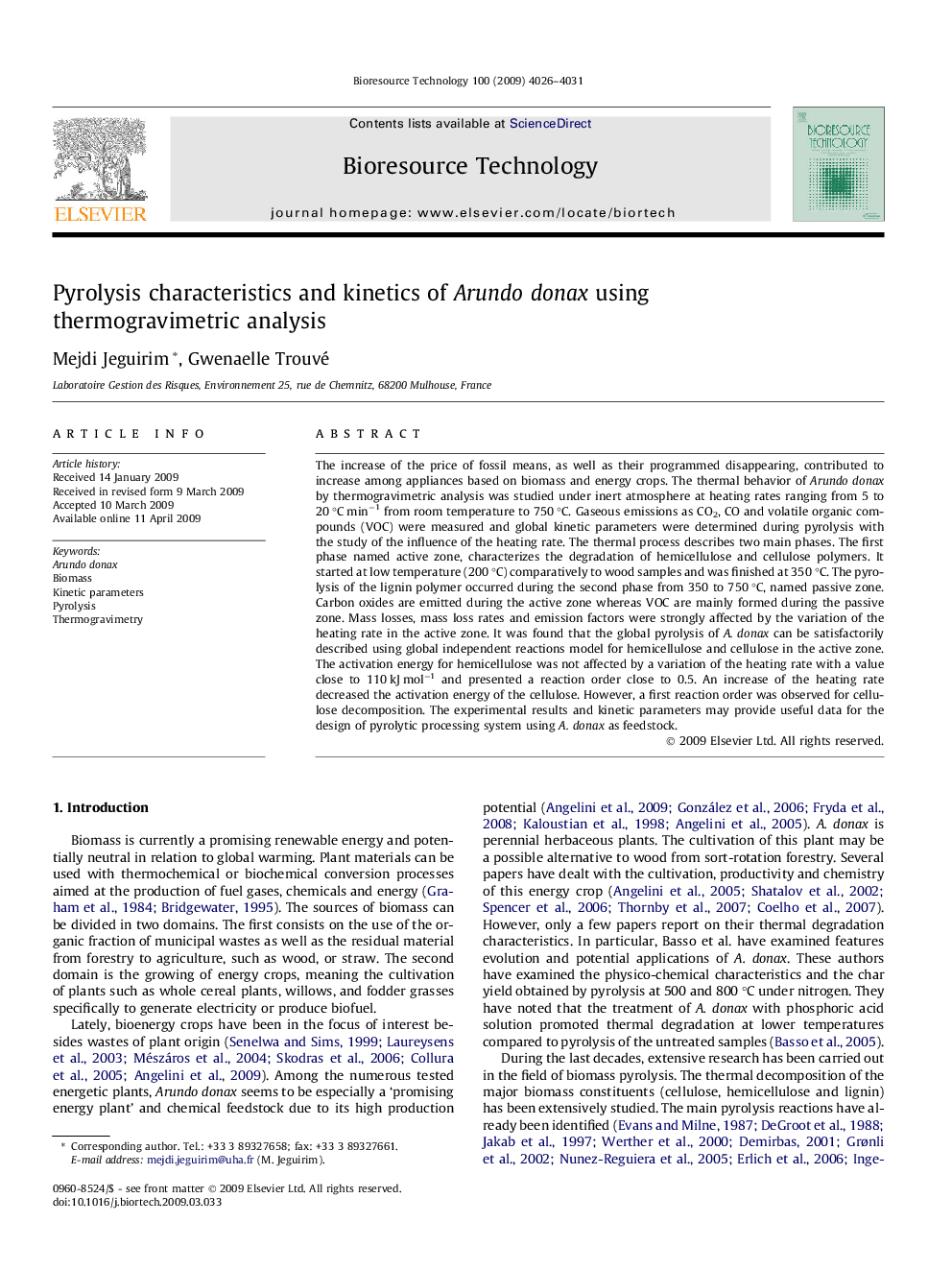| Article ID | Journal | Published Year | Pages | File Type |
|---|---|---|---|---|
| 683709 | Bioresource Technology | 2009 | 6 Pages |
The increase of the price of fossil means, as well as their programmed disappearing, contributed to increase among appliances based on biomass and energy crops. The thermal behavior of Arundo donax by thermogravimetric analysis was studied under inert atmosphere at heating rates ranging from 5 to 20 °C min−1 from room temperature to 750 °C. Gaseous emissions as CO2, CO and volatile organic compounds (VOC) were measured and global kinetic parameters were determined during pyrolysis with the study of the influence of the heating rate. The thermal process describes two main phases. The first phase named active zone, characterizes the degradation of hemicellulose and cellulose polymers. It started at low temperature (200 °C) comparatively to wood samples and was finished at 350 °C. The pyrolysis of the lignin polymer occurred during the second phase from 350 to 750 °C, named passive zone. Carbon oxides are emitted during the active zone whereas VOC are mainly formed during the passive zone. Mass losses, mass loss rates and emission factors were strongly affected by the variation of the heating rate in the active zone. It was found that the global pyrolysis of A. donax can be satisfactorily described using global independent reactions model for hemicellulose and cellulose in the active zone. The activation energy for hemicellulose was not affected by a variation of the heating rate with a value close to 110 kJ mol−1 and presented a reaction order close to 0.5. An increase of the heating rate decreased the activation energy of the cellulose. However, a first reaction order was observed for cellulose decomposition. The experimental results and kinetic parameters may provide useful data for the design of pyrolytic processing system using A. donax as feedstock.
